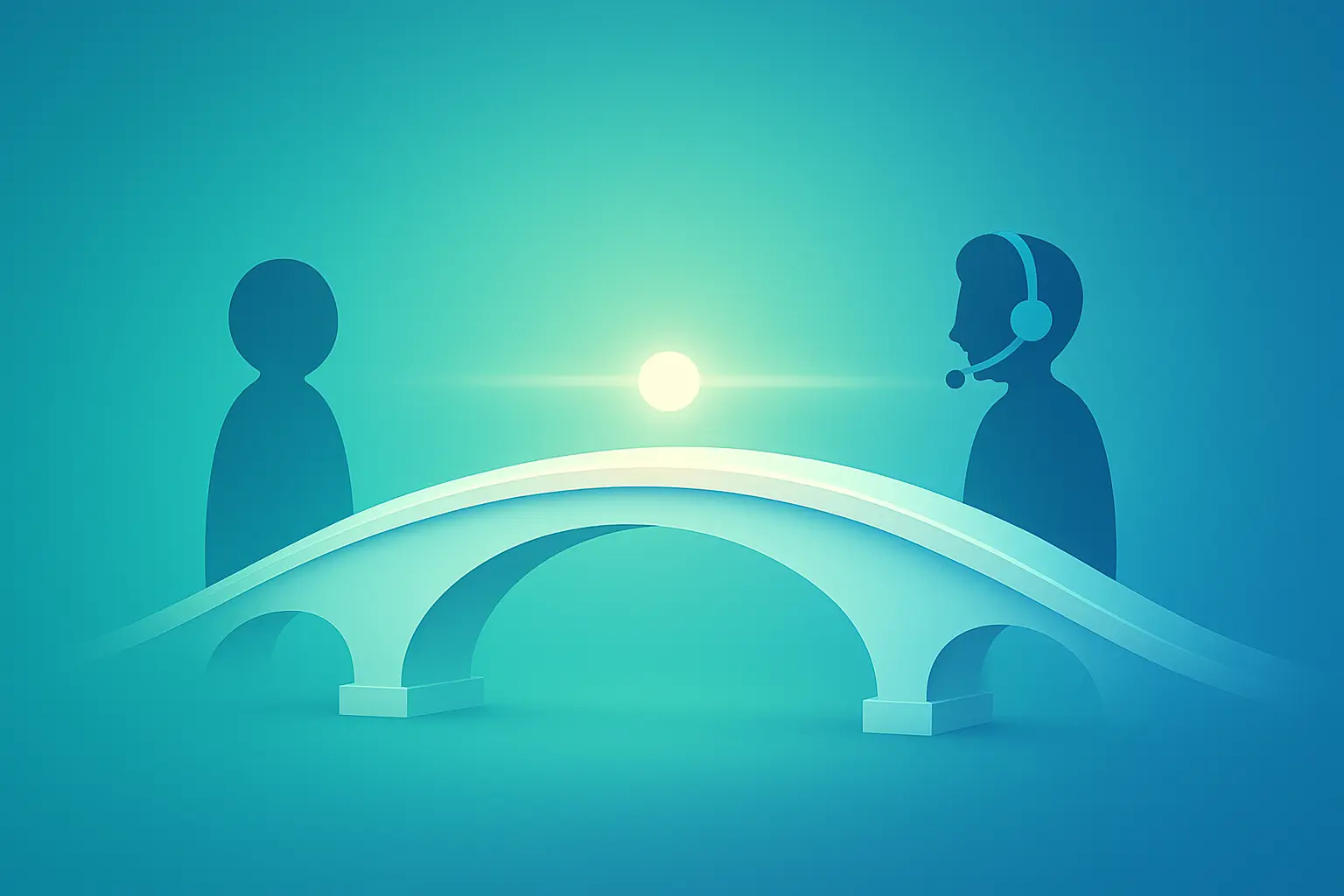Client vs. Customer: All You Need to Know
- November 1, 2022
- 6 mins read
- Listen

A customer or client is important for any business as companies will struggle to find success without them. Thus, a business always strives to provide the best possible service or product to its customers or clients. In that regard, a business also needs to understand the distinction between a customer and a client. Such knowledge will allow a company to refine their target groups and achieve more success. Thus, let’s talk about clients and customers, lay out the differences, and how you can turn customers into clients.
Defining a Customer
A customer is an individual or company that buys a good or service from a business. While being an umbrella term, customers can also be referred to as clients, consumers or buyers depending on the industry. Customers can either be one-time buyers or recurring purchases. In the first case, customers just simply come to your business once and get whatever they need and usually do not come back. A great example is you going to the grocery store to buy some fruits and not returning there again. This is usually the most common case for customers as they get the products, they need from you and do not make future purchases. On the other hand, recurring purchases are your long-term customers as they have a brand loyalty like Apple users do with their products. In this case, it is mostly out of brand loyalty or recurring services that customers stick to a product or business.
Defining a Client
A client is an entity that receives or subscribes to services or solutions from a business. Thus, a client can be an individual, group, or organization that is in need of solutions for their business. A great example would be individuals, groups, or companies subscribing to our Chatbot or Live Chat products to enhance their customer service. These services are usually recurring purchases and are designed to offer long term service to purchasers. One important thing to note is that clients can be considered as customers as mentioned above. However, customers are not clients as the former leans more towards one-time buys while the latter is all about receiving solutions for the long-term.
Client vs. Customer: The Differences Between the Two
Both clients and customers have similarities such as their needs, expectations, providing them the right kind of service, etc. Also, all clients can be customers, but all customers are not clients depending on the industry. That said, there are some key differences between a client and customer that set each group apart.
| Client | Customer | |
| Relationship Type | Long-Term Collaboration | Generally Short-Term and Transactional |
| Type of Support Needed | Personalized Support | Service or Product Support |
| Offerings | Needs Customized Service or Product | Standard Products or Services |
| Contractual Obligations | Formal Contracts | None |
| Target Group | Smaller and More Refined | Large |
| Sales Process | Long Cycles | Short Cycles |
| Volume of Business | Small but high value targets | High with lower value per target |
While the above are general cases for both groups, that does not mean that there is a huge difference between serving clients and customers. Both will earn you success provided you serve them well and give them what they want out of services or products. It depends on the industry your business belongs in and what type of entities you are serving as your target group. The differences simply outline the type of benefits, service, and strategy that you will need to employ as a business to acquire them into the fold.
Why is Knowing the Difference Important?
It is important for businesses to know the difference as companies need to address each group differently. Clients want a more personalized support system and customized services from you. In return, they use your service exclusively and you get a hefty revenue. Whereas customers are more transactional and one-time purchase oriented. So, your strategy as a business would be to provide product support and attract as many customers as possible to increase your revenue. By navigating both of these groups, a business can use this knowledge to serve their target group better, whether it be serving customers or clients. That said, there is a way to turn customers into clients by getting them to come to you for services and here is how you can do that.
How To Turn Customers into Clients?
There are some methods that you as a business can utilize to turn customers into clients. However, it is important to mention that each way of handling this process works differently from business to business. Regardless, here are some ways you can turn customers into clients.
Loyalty Programs
Rewarding customer loyalty is one of the best ways to turn them into long-term clients. By rewarding them with points or goodies every time, you are satisfying your customers by rewarding them. This system works in most cases as you are incentivizing customers to buy your products and over time, they can turn into regular clients. Offering them points that they can redeem for discounts is one of the common ways loyalty programs are executed.
Personalized Offerings
When you have some customers that are recurring, you can start giving their personalized offerings like discounts or promotions. That way, you are drawing them more to your business and showing them they matter to you. This increases customer loyalty and slowly converts them into loyal clients. For such offerings, you should make use of strategies like WhatsApp Campaigns to get the word out to potential clients.
Providing Excellent Customer Service
Whenever a customer shops with you or comes to avail your services, interact with them and show that they matter. Over time, these customer experiences draw them to your business and turn them into loyal customers. All it takes is offering the best customer support solution you can offer. To do that, you can make use of Live Chat and Chatbot solutions like REVE Chat to provide fast and personalized support.
Regular Communications
When it comes to dealing with clients or loyal customers, it is important to be communicating with them regularly. This is why positions like Customer Success Manager and the likes are used for most businesses. Utilizing that, businesses can regularly communicate with loyal customers to turn them into clients and retain existing ones.
Product and Services Quality
Lastly, your products and services have to be top-notch. That way, you are already attracting customers because of how good your offerings are. After that, you can mobilize other techniques to retain them and eventually turn them into clients.
Wrapping Up
Customers and Clients are different in many ways but they are still similar in terms of what they want and what you should offer in general. By curating your products, services, and such, you can turn customers into clients and also provide great service for both groups. However, it is important to know that not all businesses want clients or customers exclusively. There should be a good mix depending on what products or services you are selling and what industry you belong to. Hence, using the information we have talked about, you can make the right decisions for business and elevate yourselves to greater heights.
Frequently Asked Questions
A client is someone who enters a long-term and formal business relationship to purchase or utilize a service from a company. On the other hand, a customer is someone who buys products or services without a formal agreement and are in a short-term relationship with the company.
No, not all customers can be called clients, as clients avail services while customers buy products and also subscribe to services. However, all clients can be called customers.
Clients are individuals or companies that take a service from another business. Clients are usually long-term partners and require more personalized support and customized solutions.
It depends on the situation as to what industry your business is in as well as what the individual is buying. If a product is being bought, the buyer is called customer. However, if a service is taken, the purchasers are referred to as clients.
A customer example is someone who goes to the general store to buy some chips. Meanwhile, a client is a business comes to REVE Chat for their customer service solutions.




